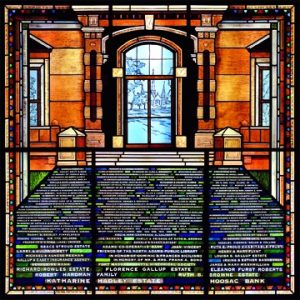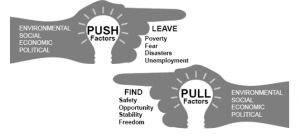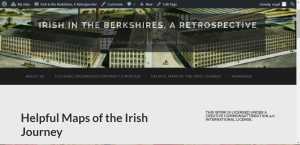As an individual who chooses to study history I find the discipline the least thing but boring, however, for the many who cringe at the thought of reading what seems like ancient information and repeatedly attempting to memorize dates and names I want to share a bit about the experience Patrick and I had Friday, September 29th and our experiences since. It has highlighted how interactive the study of history can be and how intersectional and interdisciplinary it is. Interdisciplinary here means that studying history also involves the study of other subjects such as sociology and law among others. When I say intersectional here, I refer to Patricia Hill Collins and Sirma Bilge’s definition from their 2016 book Intersectionality:
Intersectionality is a way of understanding and analyzing the complexity in the world, in people, and in human experiences. The events and conditions of social and political life and the self can seldom be understood as shaped by one factor. They are generally shaped by many factors in diverse and mutually influencing ways. When it comes to social inequality, people’s lives and the organization of power in a given society are better understood as being shaped by not a single axis of social divisions, be it race or gender or class, but by many axes that work together and influence each other. Intersectionality as an analytical took gives people better access to complexity of the world and themselves [1].
The day of our first visit to Newport we discovered magazines, photographs, and newspapers at the Richards Free Memorial Library. Furthur, we talked with several different employees and visitors of the library to learn about Finnish personality and contribution in the town. In one piece I found that the old Sunapee Temperance Hall turned into Sunapee Bedding. That record was from 2003 or 2004.
Our next stop in Newport was Sunapee St. as it had come about in so many of our sources so far as a popular spot for the Finns in the late 19th and early 20th centuries. As we traveled further on up the road Patrick found the address for what was Sunapee Bedding, 239 Sunapee St. We ventured to that spot and found a place called Zuzu’s Sandwich and Gifts. Both Patrick and I thought it would be worth it to go into the shop and ask about the building’s history. What we found was an older woman employee, apparently a fill in, for a fill in, for a fill in, who was able to confirm that the building used to be the Finnish Temperance Hall. It felt like we had uncovered an amazing mystery. She allowed us to explore the building, check out the wooden designs that represented Finnish culture and the stage where the Finns would put on shows for those at the hall. This woman also told us that in the recent past she was a realtor in the local area. From her time as a realtor she had become familiar with Finnish housing, and she even told us about the architecture and peculiar traditions in Finnish houses. Even better, she remembered just where one of these houses had been, and she directed us to it.
Patrick and I were pleased to be able to easily find the Finnish house. We knocked on the door, hoping to be able to take a peek inside and find the cabinets that the Woman from Zuzu’s told us about. In these glass cabinets that existed in almost all Finnish houses in between the dining room and living areas, according to this woman, the Finns would hold their most valuable possessions or interesting trinkets. Unfortunately nobody was home but we did take pictures of the exterior of the home and may research if it was true to Finnish culture, which it looked like it very well might have been.
Needless to say, Patrick and I were excited about what we found that day in Newport, New Hampshire. On our way home we discussed how we could use the cemetery records from the library to locate Finns from photographs or from books in the local cemeteries. We talked about our future plans to revisit the area to dive into the sources we found, retrieve copies, and talk with the library historian who we were informed had ample knowledge of Finnish history in Newport. From our field experience Patrick and I also could discuss many different subjects, such as historical and current politics and social issues.
I am so grateful for my partner now because he willingly took another trip to Newport the next Friday, October 6th, and there he discovered even more about the Finns. He successfully connected with the historian Marylou McGuire. She was able to provide Patrick with names of relevant professors and historians for us to contact. Now, digitally speaking, Patrick and I have to begin to organize the research we have compiled and from there develop a website design that makes sense for our project aim. I have been brainstorming lately about creating a website that incorporates different lesson plans or curriculum for local schools to use as local history lessons on the Finns. It would be a great way to incite more awareness of Finnish migrant history.
[1] Hill Collins, Patricia, and Sirma Bilge. 2016. Intersectionality. pages 2-3.


